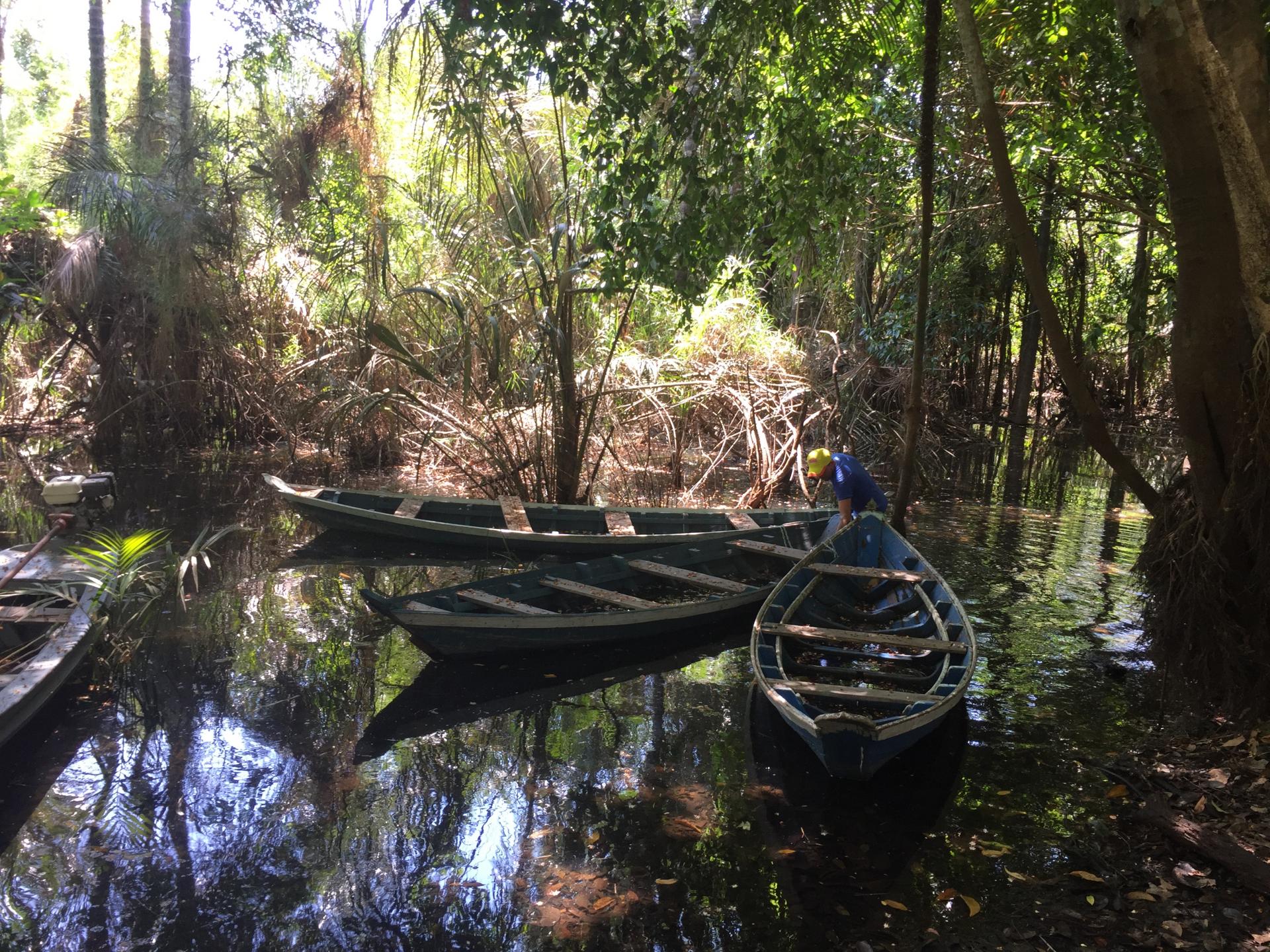Rio Arapiuns – This is Amazonian Lifestyle

The vast Amazon rainforest is home to numerous indigenous peoples who have inhabited this place since time immemorial. Many of these isolated peoples have preserved their culture because they have had little contact with modern civilization. There are about 320 different indigenous peoples living in Amazonia. These are the indigenous people of a country, the people who first settled an area.
The Amazon Indians know the rainforest very well and live there in harmony with nature. They have adapted their way of life to the jungle and only ever take as much as they need to survive. Therefore, it is of special concern to them to protect their habitat in order to ensure their survival. Before you start your Brazil trip, be sure to learn about their authentic way of life and customs.
The true size of the Amazon
First of all, it is important that you learn about this region of the world before you learn about the Amazon way of life. The Amazon covers nearly 50 percent of Brazil's land area. Most of the rainforest that covers the region is in the lowlands. It consists of tropical rainforest and seasonal rainforest. The Amazon's location on the equator means that it receives a lot of light and heat from the sun and is covered by a lot of humid air. This guarantees a steamy, hot climate with high temperatures and intense rain showers. The Amazon is home to the largest system of rivers and waterways in the world.
This vast jungle forms a natural barrier that isolates many of the indigenous peoples from the rest of civilization. The indigenous peoples of the Amazon have survived for centuries thanks to their interaction with the environment. The perfect balance between nature and the indigenous peoples has helped to maintain the Amazon in its natural state. This means that these peoples have an intangible wealth that should be protected as well as their environment.
The Rio Arapiuns is a tributary of the Rio Tapajós, and the meeting of the two, depending on the waves, can resemble a trip on the open sea. There are countless beaches along the banks of the Rio Arapiuns. Among the most famous are Praia do Icuxi, Praia da Ponta do Toronó, and Praia da Ponta Grande.
Lifestyle in harmony with nature
Many indigenous peoples have now opened up to modern civilization and maintain casual to intensive contact with visitors. They are mostly open to tourists and show their authentic lifestyle.
Handicrafts play an elementary role for many inhabitants. The riverside inhabitants in the Tapajós-Arapiuns region have now achieved a certain international fame with their unique designs that combine the beauty and tradition of the people. In addition, the handicrafts of Tapajós are an artistic and cultural heritage of the state of Pará. The baskets developed by the women of the communities are made from the straw of the tucumã, a palm tree typical of the forests of Pará. The fibers of this plant are used to make baskets, mandalas, bags, and various other decorative products, dyed with natural pigments from the region, reflecting the authentic beauty of the Amazon.
In addition, many peoples live by hunting, gathering, and fishing. They use very traditional methods to obtain their food. Mostly bow and arrow, nets, and baskets are used. In addition, their own medicine is obtained mainly from the plants that grow along the Amazon River.
In addition, the entire forest is used as a pantry. Even staple foods such as cassava, which are widely consumed today, come from related wild plants. The tropical forest provides fruits, roots, tubers, and nuts, as well as the meat of wild animals and fish. In addition, the harvest is usually contributed by the whole family. Women in indigenous villages plant small gardens on cleared areas in the forest. In the gardens, staple crops are combined with tuber crops such as the purple yam. Many people plant fruit trees such as the cinnamon apple tree or cocona, a fruit related to the tomato whose juice is very popular, and uvilla, also called Amazon tree grape. Some families plant trees that are valuable for their wood and are considered a long-term investment. Fast-growing species like the bolaina, whose natural habitat is wasteland, can be cut down after a few years, while slower-growing species are an investment for children and grandchildren. This promotes their own trade and strengthens relationships with surrounding cultures, allowing for an authentic life in the Amazon.
History at first hand
The history of many traditional peoples in the Amazon is marked by close contact with nature and, unfortunately, violence. In addition to their connection with nature and the cultivation of their own culture, they have been victims of numerous acts of violence and exploitation by conquerors and gold miners. Even today, many struggle with the consequences of exploitation, especially when it comes to their own land and the exploitation of the rainforest. Yet many indigenous peoples have remained true to themselves and have managed to adapt to current generations.
The Sateré-Mawé live in the central Amazon in two indigenous territories. One, called Andirá-Marau, is located in the border area between the states of Amazonas and Pará and is the original territory of this people. This people has remained true to its own culture and history, using the land in a natural way without destroying or exploiting it.
A special lifestyle
The authentic way of life in the Amazon has a very long tradition and is very close to nature. It should be heard and experienced. Now that you know more about the indigenous peoples, you can approach the peoples of the Amazon with new eyes. So, if you are in the Santarém area during your Brazil vacation, be sure to interact with the people there to learn about their lifestyle!
Sources: www.delborgo.com.br, www.mirim.org, www.welt-sichten.org

